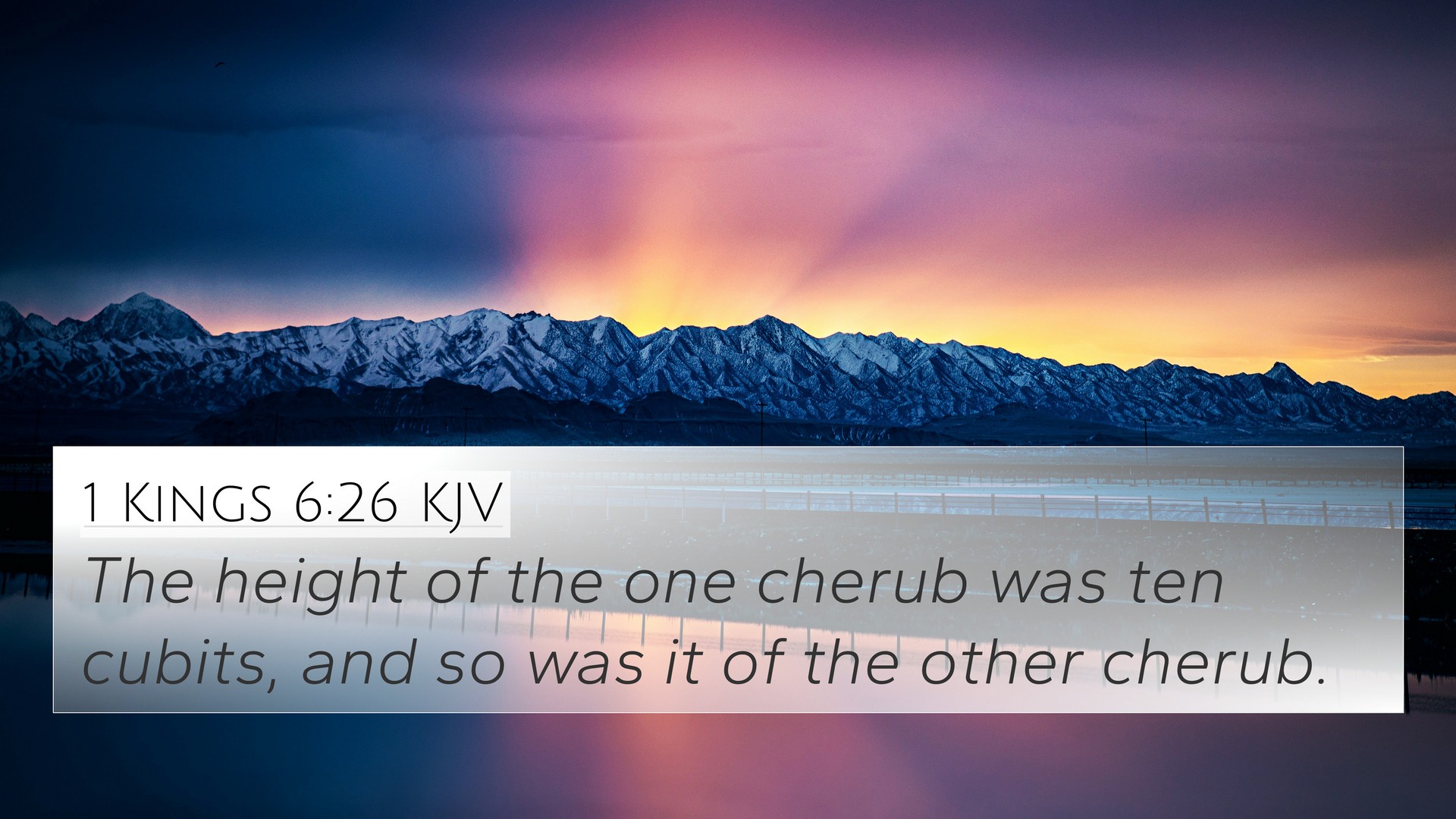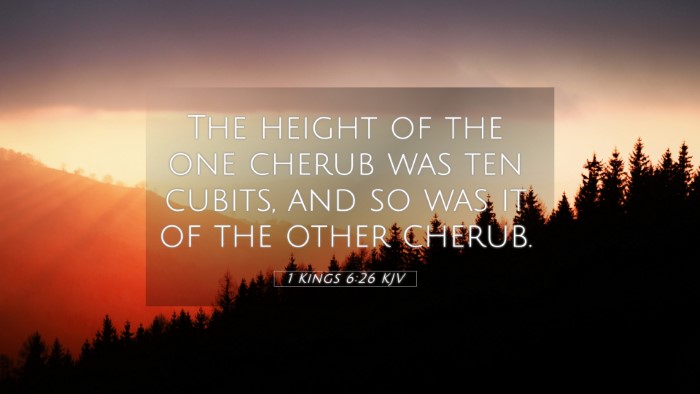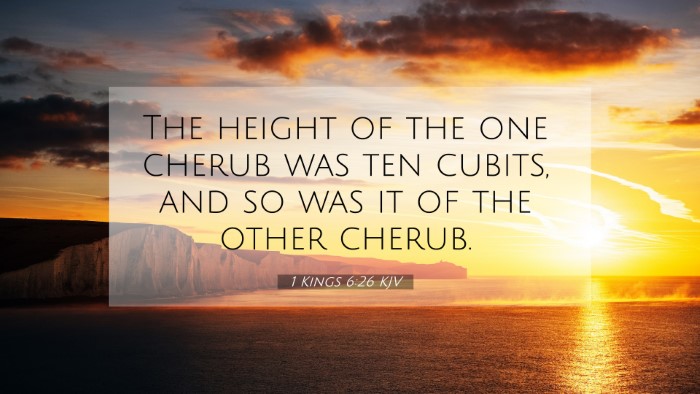Understanding 1 Kings 6:26
1 Kings 6:26 states, "The wings of the cherubim were twenty cubits long; one wing of one cherub was five cubits, reaching to the wall of the house; and the other wing was likewise five cubits, reaching to the edge of the other cherub." This verse is part of the detailed description of Solomon's temple and highlights the intricacies and grandeur of its design.
Summary of the Verse
The verse describes the colossal cherubim placed in the Holy of Holies of the temple built by Solomon. These cherubim, symbols of God's presence and guardianship, emphasize the sacredness of the temple space.
Commentary Insights
- Matthew Henry: Henry elaborates on the significance of the cherubim as representations of God's majesty and the divine. They are not mere decorations but vital features that invoke awe and reverence in worship.
- Albert Barnes: Barnes provides detailed architectural context, noting that the measurements reflect both the grandeur and the divine nature of the space they occupy. He emphasizes that the dimensions signify an expansive view of God's protection over Israel.
- Adam Clarke: Clarke delves into the symbolic meanings of cherubim, portraying them as heavenly beings that link heaven and earth, thus serving their role as mediators between God and humanity.
Thematic Connections
This verse offers rich themes related to divine presence, protection, and worship. To understand these nuances, it's essential to explore its biblical connections.
Related Bible Cross References
- Exodus 25:18-22: Describes the construction of the cherubim above the mercy seat, establishing the foundation for their significance in the temple.
- Ezekiel 10:1-22: Provides a vision of cherubim as powerful creatures associated with God's glory, reinforcing their roles in guarding sacred spaces.
- Isaiah 6:2: Mentions seraphim, highlighting the theme of heavenly beings surrounding God's throne, akin to the function of cherubim in the temple.
- Hebrews 9:5: Refers to the cherubim of glory overshadowing the mercy seat, illustrating the continuity of divine presence from the Old to the New Testament.
- Psalm 99:1: States that God reigns and is enthroned among the cherubim, linking the imagery to God's sovereign rule.
- 1 Chronicles 28:18: Offers insights into the plans for the temple, including references to the cherubim as integral parts of worship.
- Revelation 4:6-8: Connections can be drawn with the heavenly creatures surrounding God's throne, suggesting the eternal nature of these beings in worship contexts.
Interpreting Biblical Themes through Cross-References
Understanding themes within 1 Kings 6:26 requires examining the broader biblical narrative. Exploring cross-references reveals how this temple design symbolizes God’s interaction with humanity and His desire to dwell among His people. Such themes can be seen throughout scripture, from the Garden of Eden to the New Jerusalem.
Utilizing Tools for Bible Cross-Referencing
For those looking to dig deeper into biblical themes and connections, there are various resources available:
- Bible Concordance: Useful for finding specific words or themes across scriptures.
- Bible Cross-Reference Guide: Offers structured ways to find related scriptures easily.
- Cross-Reference Bible Study: Encourages thematic exploration of verses by linking different texts together for deeper understanding.
Conclusion
1 Kings 6:26 invites readers to reflect on the grandeur of Solomon's temple and the significance of cherubim as symbols of God's presence. By utilizing cross-references, believers can enrich their understanding of scripture, appreciating the intricate connections that form a cohesive biblical narrative. Whether preparing for sermons or personal study, exploring these themes through cross-referencing opens up a deeper dialogue with the text and with God.


